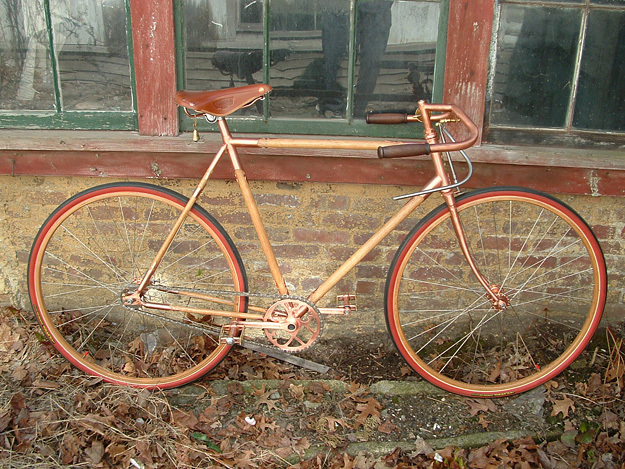You need to go another 1000 years back in time to make bicycles great again.
Many of the pre-collapse Greek and Roman roads were quite viable for bicycles:

This state includes some amount of neglect, but a road that's been used occasionally.
While falling short of Dutch bike paths, it's nothing you won't encounter in Paris-Roubaix.
A few were outright comfortable:

Ancient roads remain popular cycling paths even today.
But even without a road, on rough terrain, chariots were stable enough to shoot from:
Note that this reconstruction lacks leather tires, which
were quite common and would soften the ride further. Ancient Egyptian chariots also had a
similar level of sophistication to at least a basic bike.
It's hard to think of anything that would prevent a bicycle from being used in the developed parts of Greek or Roman civilizations. The horse was simply more performant (if more expensive and fuel-hungry), just as the car has been more performant (if more expensive and fuel-hungry) than the horse over the last century. And how the easier-to-ride scooters and electric bicycles are displacing pedal power today.

Could a bicycle be built with then-available materials?
Modern department store bikes aka BSOs are typically made out of some unspecified grade of steel and weigh 16-20 kg. Basic construction steel, the kind used in medium-rise building frames, ranges from 200 to 280 MPa yield and about 320-380 MPa ultimate. Reasonably good steels like AISI 4130 allow for steel bikes in the 12-15 kg range. 4130 steel has a tensile strength of 360 MPa yield and 560 ultimate.
Bronze has tensile strength ranging from 70 to 1000 MPa, with an average of 280 MPa for yield and 470 MPa for ultimate strength. So, bronze is about 20% weaker than decent bike steel, but 20% stronger than cheap steel. All in all, even ancient bronze should be on par with what BSOs are made out of, but 10% heavier per unit weight. Bronze lugs are well within what was commonly made at the time.
Wood, of course, hasn't changed much over the years. Strong, high-quality wood was in high demand for ships, polearms and shields. So a bike with bronze lugs and bronze or wooden frame members would likely be in the same weight range as modern BSOs, i.e. within 20 kilograms. All-wood construction was achievable pretty much throughout history, but has less performance potential.

One issue is that, before the industrial revolution, a bronze-lugged bike would likely cost more than a basic rideable horse. Fresh-air exercise was also definitely easier to come by, as well, making the bike's benefits less attractive. Even if you had the means to build a sophisticated vehicle, whipping a horse was seen as a classier activity than exercising your calves.






